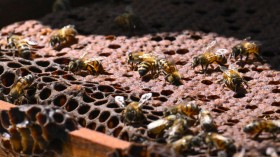Researchers have discovered a new chemical compound in the Earth's atmosphere that forms sulfuric acid causing a significant impact on the climate change and health.
A team of researchers from the University of Colorado Boulder and the University of Helsinki have found that a new chemical compound, a type of carbonyl oxide, combines with sulfuric dioxide present in the atmosphere to form sulfuric acid. Sulfuric acid can impact the increase in acid rain and cloud formation. Acid rain affects the terrestrial and aquatic life of plant, animals and marine creatures. It can also raise health concerns as it affects the respiratory system of the humans.
Sulfuric acid is usually formed by the reaction between hydroxyl radical OH and sulfur dioxide, which is triggered by the sunlight. The experts detected the presence of sulfuric acid at night, particularly in forests in Finland, when the sun wasn't present.
"We have discovered a new and important, atmospherically relevant oxidant," Roy Mauldin III, a research associate at University of Colorado Boulder and study's lead author, said in a statement.
"Sulfuric acid plays an essential role in Earth's atmosphere, from the ecological impacts of acid precipitation to the formation of new aerosol particles, which have significant climatic and health effects. Our findings demonstrate a newly observed connection between the biosphere and atmospheric chemistry," he said.
For their study, the experts combined ozone present in the atmosphere with the sulfur dioxide and various alkenes by holding freshly broken tree branches to the flow tube that is hooked up with a mass spectrometer. The flow tube was used to add gases. In order to avoid hydroxyl radical OH reacting with sulfur dioxide, the researchers removed its traces using a chemical compound. The alkenes from the trees reacted with ozone and sulfur dioxide forming sulfuric acid.
The researchers pointed out that the presence of sulfuric acid over the forests of southeastern United States may possibly be responsible for the cloud formation, thus providing evidence to the prevailing cool temperatures in the region.
They noted that the new method of forming sulfuric acid needs to be considered for further studies on climate change as it may affect the atmospheric sulfur cycle.
The findings of the study are published in the journal Nature.
© 2024 NatureWorldNews.com All rights reserved. Do not reproduce without permission.





